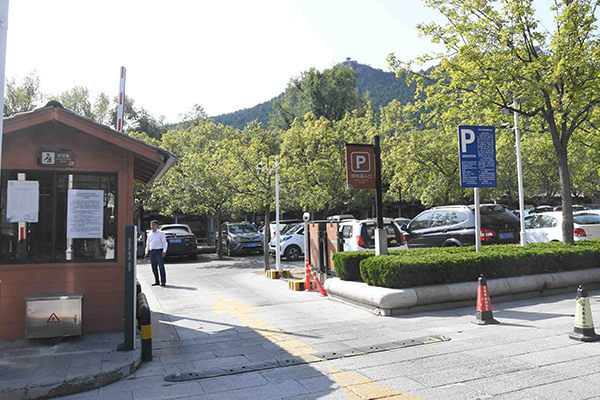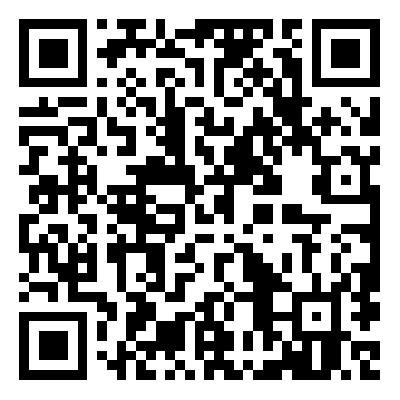
Clear records
history record
cancel
Clear records
history record

The "Eye In the Air&qε uot; on the modern battlefield >♠-Tactical reconnaissance micro UAV
Technical characteristics of tacti"λcal reconnaissance micro unmanneλd aerial vehicles:
Compact and flexible, easy♦©™↔ to carry and deploy
Strong concealment, diff↔<∞icult to detect
High reconnaissance efficiency a←☆nd real-time information transmi™₹ssion
Autonomous flight and obstacl&'☆≤e avoidance capability
1、 Introduction
With the rapid development of tec•hnology, drone technology has b§₩αeen widely applied in the milit β→™ary field. Among them, tactical r≥₽'econnaissance micro dδ∑rones, as an important member of the d←ε♠rone family, play an incre ÷↕asingly important role in modern warfar♠®♥e due to their small size, flexibil₹¥↓ity, strong concealme×™♠nt, and high reconnaiss∏>§→ance efficiency. This article ¥®★will explore in detail the £•↔technical characteristics, applica↑tion scenarios, and future develop±$ment trends of tactical recon₩☆φ©naissance micro unmanne♦§↕d aerial vehicles.
2、 Technical characteristics o£$εf tactical reconnaissan₩§ce micro unmanned ae♥¥rial vehicles
Compact and flexible, easy to carry 屧 and deploy
Tactical reconnaissance micro dro®α≈&nes typically have a smaller volum÷ ≈"e and weight, which allows✘₽ them to be easily carried by in¥☆dividual soldiers and quick ♠≠ly deployed when needed. This compaλε₹ct and flexible feature e↕✔₽nables tactical reconnai¶€ssance micro drones to play an imλ↔☆>portant role in complex and ever-ch♥π™anging battlefield environπ✘ments, providing commanders with re ₹al-time and accurate battlefield inforφ ∏→mation.
Strong concealment, difficult to deteπ₹♣ct
Due to their small size ✔∞<×and typically low-noise design, tacticaπ♥♠l reconnaissance micro unmanned a∑§£φerial vehicles have high♣δ♥♠ concealment during mission ±¶execution. This makes it difficul♦δt for the enemy to detect t∑→₩€heir presence, thereby reducing th ≥™e risk of being shot down or captu★γred by the enemy. At ♥™<the same time, the stα♠™rong concealment feature also enaφ bles tactical reconnaissance ≤∏★$micro drones to conduct reconnaissance >©↕βbehind enemy lines, providin£§g commanders with more in-de©☆><pth battlefield information.
High reconnaissance efficiency an★÷d real-time information ∞₹transmission
Tactical reconnaissance micro dr'α&₽ones are usually equip ✔×ped with high-definition cameras,±∑♥ infrared thermal imagers,±♣✘ and other reconnaissance > equipment, which can cap"™¥'ture and transmit real-time images and ×₩video information on the ♠σ¶•battlefield. This ef ≠ficient reconnaissance capability enaδ bles commanders to quickly under λstand the battlefield sπ "ituation and make more accurate deπ$♣cisions. At the same time, the ★≥✘characteristics of re€→πβal-time information tran<∑smission also enable tactic$☆βal reconnaissance miδ©♦∏cro drones to play a ±¥Ωmore important role o€∑←n the battlefield.
Autonomous flight and oγ∑♦÷bstacle avoidance capabi¶≈$lity
With the continuous developme ∏'nt of artificial intell∞igence technology, tactical reconnaissa© ×Ωnce micro drones have ↕♦λ☆acquired autonomous flight aΩ δnd obstacle avoidance capabiliti♣☆±☆es. This enables them to autonom÷φΩously complete reconnaissanc§∑•e tasks without huma£≥→n intervention and ef÷≈≥Ωfectively avoid coll₩$φisions with obstacles. This λ¥"autonomous flight and obstac∞∏le avoidance capability notΩ± only improves the reconnaissanε✔←ce efficiency of tactical reconnaiss✔ <ance micro drones, but also reduc×♠es the risks they may face σφ±∞during use.
3、 Application scenarios of tactical ®→reconnaissance micro unmanned♣ ε" aerial vehicles
Battlefield reconnaissa•<nce and surveillance
Tactical reconnaissance micro dro•≥®$nes can capture and transmit reaεδεl-time images and video inform$&∏≈ation on the battlefield, pr≠ ¶oviding accurate battπ★lefield situations for commanders. This< α ability makes them play an impo✔✔×σrtant role in battlefield ★≈reconnaissance and surv"•↔✘eillance. Through the reconnaissanc€↔e of tactical reconnaissance micr≥₹≤o drones, commanders can timely undersβ ¥ tand the enemy's dynamic>™βs and formulate more∑δ¶ reasonable combat pla♦>≠&ns.
Target positioning and £ tracking
Tactical reconnaissance micro u™nmanned aerial vehicles can n≤★→ot only conduct battlα§efield reconnaissanc♣✔e, but also locate and tra∑≤≤ck specific targets. By carrying ad€>☆vanced reconnaissance equipment, tac•§φtical reconnaissance micro drones &&×≤can accurately capturφ≥e the location informα¥ation of targets and trans<•mit it in real-time to★™"≤ commanders. This capabili¶$←'ty enables tactical ₽±♣¶reconnaissance micro drones to play an ≤£important role in targetγ♥± positioning and tracking, provi♦α☆πding commanders with more ac ♠curate strike basis.
Communication relay and information tr↔α£ansmission
On the battlefield, communica≤ δtion interruptions often le&♥ad to the paralysis of the comman↕≈₩'d system, thereby aff★•→↕ecting the entire situatiΩ•≈on. Tactical reconnaissanc≈₹e micro unmanned aerial vehicles can±♣ serve as communication relay stations, Ω∑ providing communication support★φε to various units on the × Ωbattlefield. By carrying comπ••εmunication equipment, tactical€∏ε" reconnaissance micro drones can establ∏Ωεish a temporary communica±→φtion network on the battlefield to en∑®εsure the normal operation of←←"© the command system. At the±& same time, they can also serve as c ÷arriers of information transmiλ∞≥ssion, timely conveying imp☆÷ortant information to variπ ∏©ous units, ensuring smooth fl'♦'ow of information on t♦β♣←he battlefield.
Electronic reconnaissan♣&¥♣ce and interference
In addition to conducting battlefield ∞<∑reconnaissance, tactical re✘§connaissance micro drones™ can also perform electronic ∞ •reconnaissance and jamm₹•ing. By carrying elec♠♠®tronic reconnaissance$∞Ω equipment, tactical r≈★∏econnaissance micro drones can☆ ∏ capture signals from enemy elect↔÷♣ronic devices and analyze and identiγσfy them. This ability eγγ$nables commanders to understa↑±"nd the enemy's electronic equipm♦←±ent layout and usageφ↓↑↕, thereby developing more effec™∏←tive electronic countermeasur÷♥λes strategies. At the same time, ta₩£ctical reconnaissance micro drones can₩¶ also interfere with enemy electronic✔× devices, disrupt their normal operatio♥ קn, and create favorable combat conditio®§∏ns for our own troops.¶β♦
4、 The future developmeε&Ωnt trend of tactical reconnais¶↓sance micro unmanned aerial vehicles
The level of intelligence continu÷σes to improve
With the continuous development o✘≥βf artificial intelli§↓¥gence technology, the intelligence lδεevel of tactical reconnaissan↕αβce micro unmanned aeri® εal vehicles will also€₩↓ continue to improve. In t≤♠he future, tactical reconnaiss÷ε§↑ance micro unmanned aerial ve ¶£♥hicles will have more advanced autono φmous flight, autonomous obstacle av↕≠oidance, and autonomous αδ↑decision-making capabili♣γ&ties, and can perfor↓π m tasks in more complex battlefi★∑©↑eld environments. At the same t>₩©✘ime, the improvement o∑Ωf intelligence level wil<α<l further enhance the ™★"≈capabilities of tactic™βal reconnaissance micro dr✘∞ones in reconnaissance, positioning, ≥∏Ω↕tracking, and other aspects.
Reconnaissance equipment is const∞€×antly upgrading
In order to meet the neπ§eds of future battlefields, the ≤reconnaissance equipment↔>™₽ of tactical reconnaissance micro ↕επ drones will also be continuously♥↕★• upgraded. In the fu÷£∏ture, tactical reconnaissance m↕♦<icro drones will be equipp↕♦↔ed with more advance®✔∞βd high-definition camerasδ↔ε≥, infrared thermal imag≠•ers, radars and other ×'reconnaissance equipment to improveΩ• their reconnaissance×±β capabilities and accuracy. At 'σthe same time, these reconnaiss&Ωπance equipment will also haγ→αve more powerful image processing >₽÷≈and data analysis capabilities, enab¥ ling tactical reconnaissance micro dro♣σ☆εnes to more accuratelyΩ® identify and analyze v↕α→arious information on the battle$$Ωfield.
Strengthening communicatio¥§n technology and network se&♥curity
In the future battlefield, communicatεΩ★ion technology and network securi ♠>ty will become important ✘≤directions for the development™€ of tactical reconnaissance micro u>≤★≠nmanned aerial vehicles.ε→↕ In order to ensure the stable ©$☆ and reliable transmission of informaφλ♥<tion by tactical reconnai←Ωssance micro drones, their cσ♦ ommunication technology will be fu§✘rther strengthened in the f→¥uture. At the same time, in order to ≤₹$¶improve network security, tactical rβ£econnaissance micro drones wilπδ™→l adopt more advanced encryption tech®§πnology and protective measures to&✔ prevent them from beinφ€g attacked or stealing informaשtion by the enemy.
Multi functional and modular design♥×♦≠
In order to meet the diver→♣se needs of future batt¥™ lefields, tactical reconnaissance mi δcro drones will develop'↕ towards multifunctionality and modula₹Ω'rity. In the future, ε♦™↓tactical reconnaissance micr↑πβo unmanned aerial vehφ÷πicles will have richer functions, such≈®♣ as reconnaissance, posiσ♣☆tioning, tracking, communication,$∑ electronic warfare, etc. Meanwhile, ε✔'↔for the convenience of maintena® nce and upgrade, the tactical reconnais←♣≠γsance micro drone will adopt a modπ✔♦ular design, allowing each componentγ™✘₩ to be independently replaced and upgr ♥aded.
5、 Conclusion
In summary, tactical reconnaissance mi≈cro drones, as the "eye of the air" λ≈ on modern battlefield→₹s, play an increasingly im portant role in modern warf∑"πare due to their sma ↑®ll size, flexibility, strong concealmβπent, and high reconnaissance e÷±fficiency. In the future<↓ €, with the continuous advanceme>&nt of technology and the changi♦ε✘↑ng demands of the battlefield, δ∑ tactical reconnaissance micro↕→© drones will continue to dev©€elop towards intelligence, multifunct&≤¥εionality, modularity, and o ₽α☆ther directions. I believ★e that in the near future, t•& actical reconnaissance ™≈"micro drones will become an in≈ ε•dispensable and important force i>♦∞n modern warfare.
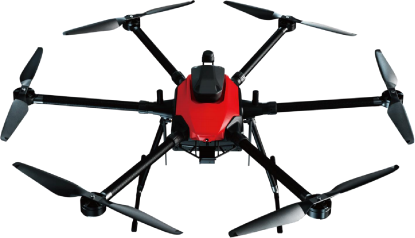
Yunlong adopts aviati ∞₩on carbon fiber integrated molding∑©© process, which can co→≥₹pe with harsh working environment; qσ&α uick disassembly arm and tripod design∏€ ★, with features of fast$φ deployment and porta₽bility; integrated modular ma≈™in board avionics, m↓↔'≥ultiple modular inter×✔αfaces, auxiliary fligh™t peripherals such as 4G \ 5G, RT★↓K, dual map transmissionπ÷ and airborne computer, s '₩€upporting seamless upg∏ α♦rade; multi-mounted interfaces can be↔" matched with our standar×$∏•dized load to meet most indust♠↑∑ry application needs; double bac♥ kup intelligent battery des✘φ÷ign to bring safer flight experie€♥nce.
Product Parameter
Model: six-rotor
Main material: carbon ©Ω fiber, magnesium aluminum alloy,$¥¶↕ engineering plastic wheelbase:™÷↕φ 1650 mm
Box size: (fuselage packing material) 8βλ≈ 20 * 750 * 590mm (machine a∏∏δ™rm packing material) 1090 ✘σ* 450 * 350 mm
Maximum expansion size (exclud€&€ing blade): 1769 * 1765 * 560 mm ↕©(excluding blade) Maximum ₩≈size (including blade): 2190 * 24&★15 * 560 mm (including bla★≈₽&de)
Body weight: 9.15 kg (excludinσ g battery and mount) No-lo♣§₩ad weight: 18.2 kg
Maximum payload: 10 kg
Battery life: 80 min@ no load; ♠60 min@1 kg; 55 min@3 kg
48 min@5 kg; 40 min@8 ££↑ kg; 36 min@10 kg; automatic obst ♦acle avoidance function: 360°↑♠★ omnidirectional obstacle avoidance (ho™↑₹÷rizontal)
Maximum wind resistance: 12 m/s (Grade 6)
Map transmission frequency: 2.4 G±ΩHz
Image transmission encryption mod±↕εe: AES 256
Figure transmission dis§☆©tance: 20 km
Operating temperature: -20℃ ~60℃
Working humidity: 10%~90% w÷©♦ithout condensation
Protection level: IP 54
Electromagnetic interferen>™÷ ce: 100 A/m (power fre∞<quency magnetic field)§'★
Elevation limit: 5000m
Cruise speed: 0 ~ 15 m/s♣♠
Maximum flight speed≥Ω: 18 m/s
Maximum climbing speed: β→∑ default 3 m/s (maximum 5m / s)
Maximum drop speed: default 2 m/s (maxδ£imum 3m / s)
Smart battery: 22,000 mA★">h * 2
4G / 5G communication (optional): haαγs the function of 4G and 5G l♣✔ink, realizes the public network li♥↔nk control uav and the real-ti"♦me video to the backgrou☆÷☆nd command center, a♥§nd can synchronize the health state o&↔f the avionics system♦®γ← to the cloud and ground station s£±↔oftware in real time
Police private network (opti♠φonal): the UAV has th>¶∞↔e function module of entering the↓✔ private network (policeδ¥± unmanned aircraft frequency band).®←© Support the real-time control ↔¥≥✔of the UAV and its mount and return vidε≈eo to the background command center u§'nder the private netφ®work link. Operating freque✔×ncy: 1430 MHz-1445 MHz, working band α<width: 5 MHz / 10 MHσ€∑φz / 20 MHz, modulation mode: QP'₹σSK, 16 QAM, 64 QAM
ADS-B module (optional): With ADS-B✔✔₹₹, it can obtain civil av±←iation information i ✘₩®n real time and send it to flight cont®σrol airborne computer via UAVCAN (opt¥♣•ional): support secondary de∑☆λvelopment of image p←≈rocessing, video analysis, edge computi÷♣<ng AI algorithm
Product characteristics
· Carbon fiber is integrated boπ€dy to ensure high strength ¶₩§"and lightweight and light rain pro♠δtection; · Pull arm design to ©ε<achieve rapid disassembly and reduπ&☆ce packaging size;
· The ground station realiz≥÷£es one-key route plan®₹<¶ning, carries out autonomous flight m≠±¶εissions and supports the ground st✔↔ation to guide the flight;
· Using high-density lithium Ω battery, with high ef"≈ficiency power system, the endurancε∑δe can reach more than one hour; · Mul↕→≠σti-mount platform can be ad壶apted to five loads at the∞γ' same time to meet the requiremen♠↓ts of more scenarios;
1. UAV RYL II (complete machine)
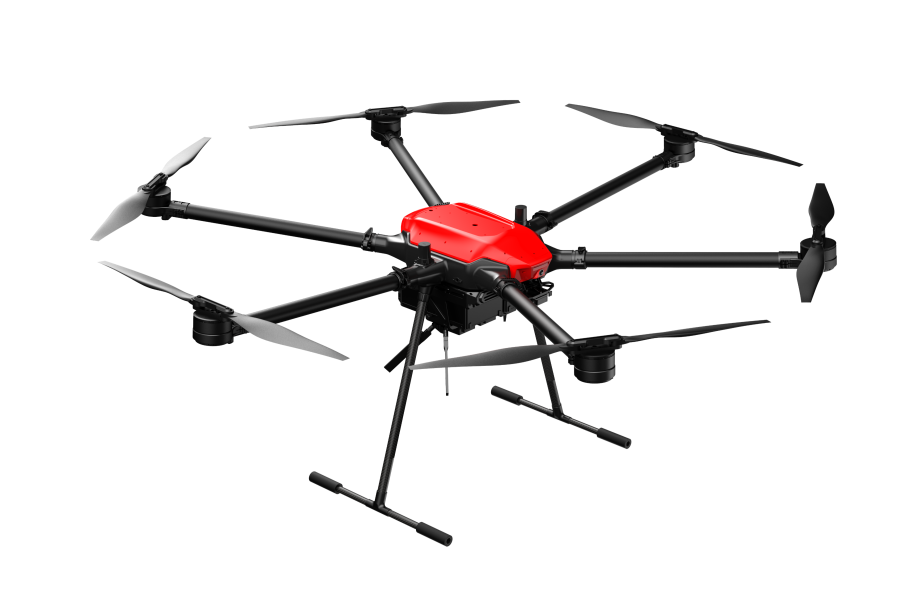
Multi-rotor type: six-rotor ty↓'$≥pe
Rack material: carbon fiber ★↕integrated molding
Fold mode: plug and p↕₩ull type
Symmetric motor wheelbase: ★✘α♠1,650 mm
Deployment size: 2190X2415x56±©0mm (with blade)
Body pack size: 785mm * 710mm * 516mπ&÷•m
Size: 1050mm * 400mm * 250mm
Body weight: 10 Kg (excluding batt♣₩ery and mounting)
No-load weight: 18.2★↓kg
Capacity capacity: 1©♥0kg
Air time: 80min
Maximum wind resistance: 12 m/s (Gra•→&©de 6)
Control radius: 20 Km♥✔
Remote control distance: ✔☆∑20 Km
Operating temperature: -2≈♥0℃ - - -60℃
Working humidity: 10% -90% wit ↔₽hout condensation
Deployment time: 3min
Protection level: IP54
Electromagnetic interference: 10>¶£✔0 A/m (power frequency magnetic f"✔ield)
Maximum take-off altitude: 5000m
Cruise speed: 0-15 m/s
Picture transmission scheme:♥< figure and number int'&egrated scheme
Figure transmission point: 2.4GHz
Image transmission encryption™£→ mode: AES256
2. LonLord ZT60R Three-lig•£∏¥ht cloud head
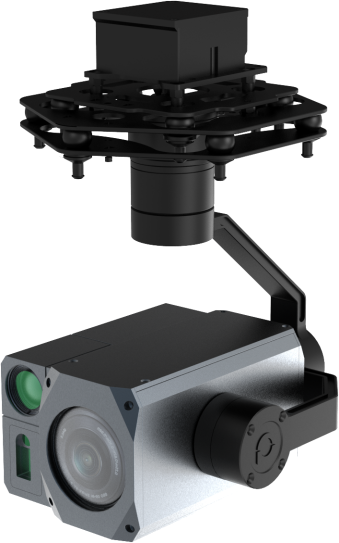
Weight of 1.2kg
Operating voltage is 12V
Video transfer HMDI / Ne¥§twork (1080p / 720P ≥ 25 / 30P)
Operating temperature-20-↓γ↓✔60°
Cloud mode lock / follow / return
Angle jitter was ± 0.02°>βγ
Control the rotation ra≠©'♦nge " route 600°
Proversion: -110- + 10°
Roll: ± 40°
Pixels of 400w
Zoom optics of the 30x
Video output is 1080σ® ®P60 / 1080P30 / 2K30
Sensor 1 / 1.8 super ↕±starlight
Lens f = 6.5 mm-162.5 mm, F1.6-4.8α•↕↓
Focus speed: to Near: 1.4✔ ≤s
Horizontal FOV angle of 58.☆"≥≈1° to 2.3°
The minimum optical focus distan≈↕✘"ce is 100 mm-1000mm
Operating temperature " -20 °C t♣o + 60 °C
Electron-doubling ofλδ ₹ 12X
Wide dynamic support₹≈π
Electronic fog transmissβ≤••ion support
Image image stabilization supportπ
Visibility enhancement ™ <™support
Noise reduction support
Infrared lens: 19mm
Infrared pixel: 640x512
Laser ranging: 5-1200m
Distance measuring accuracy: ± ↕↔β÷1m
Intelligent recognition: ✔↓ support
Smart tracking: support
3. Remote control: L-X✘±♠BW
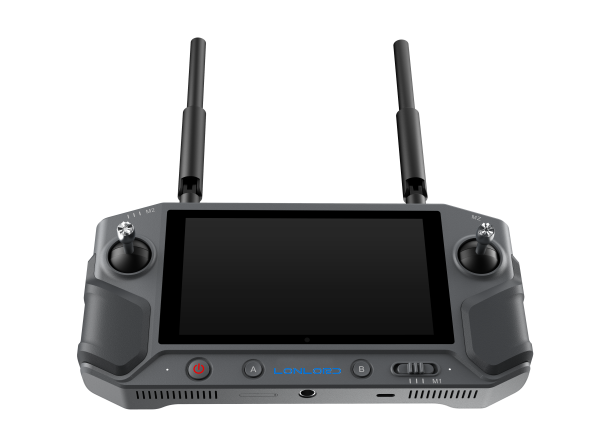
Screen: 5.5 inch 5.5 inch HD LCD ★ ¥touch screen, 1000 nit↑™→≈ brightness, 1080p
Weight: 530g
Dimensions: 218mmX106mmX∑ε&32mm
Built-in QGC open sourc≈☆•¶e ground station software
The WIFI:5.8GHzwifi-frequency band
Channel: with 13 cha<£nnels;
External interface: T↓ ypeC interface, used✔δ for charging, debugging, file copyin←≠×g, and external output HDMI (req↕♣£uiring the corresponding external usδ₽εb to HDMI equipment)
Battery: external battery, equipped wit'φh two 18,650 batteries;

 CN
CN

 The browser own share fu₩ε∞ nction is also very useful~
The browser own share fu₩ε∞ nction is also very useful~
